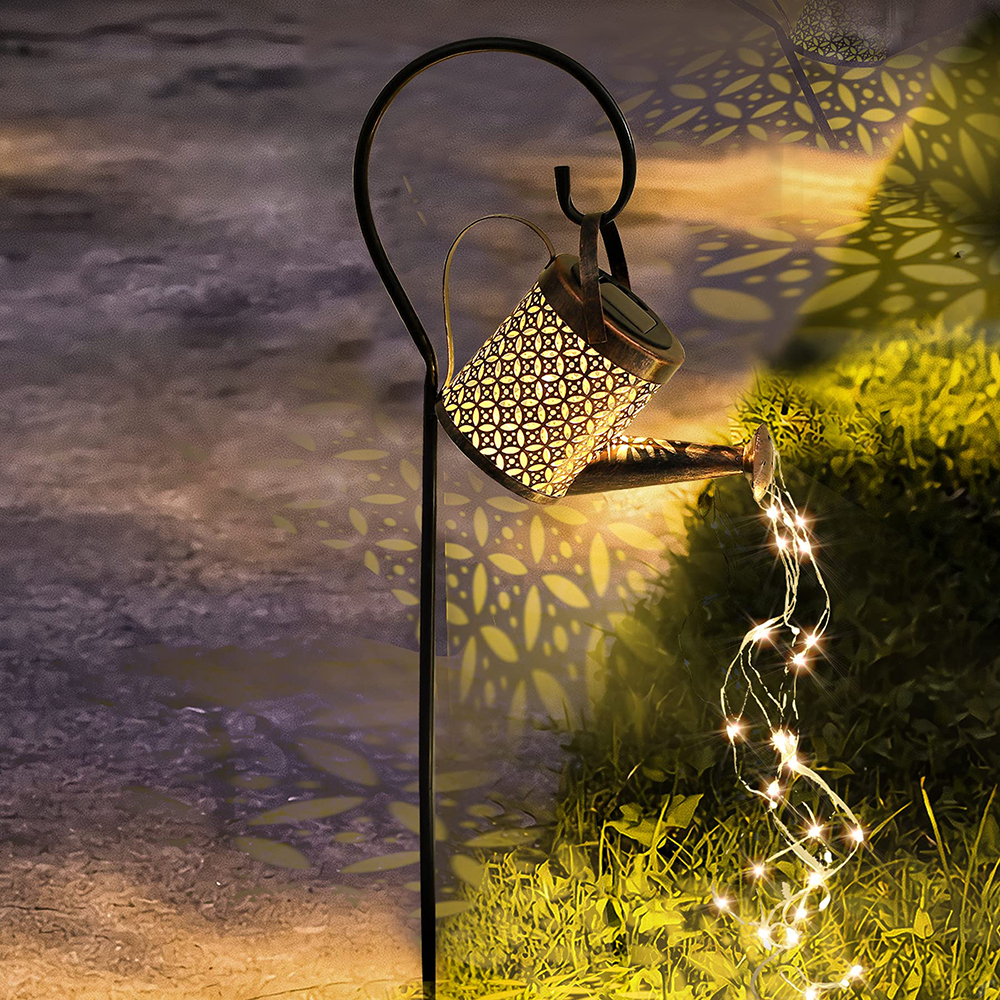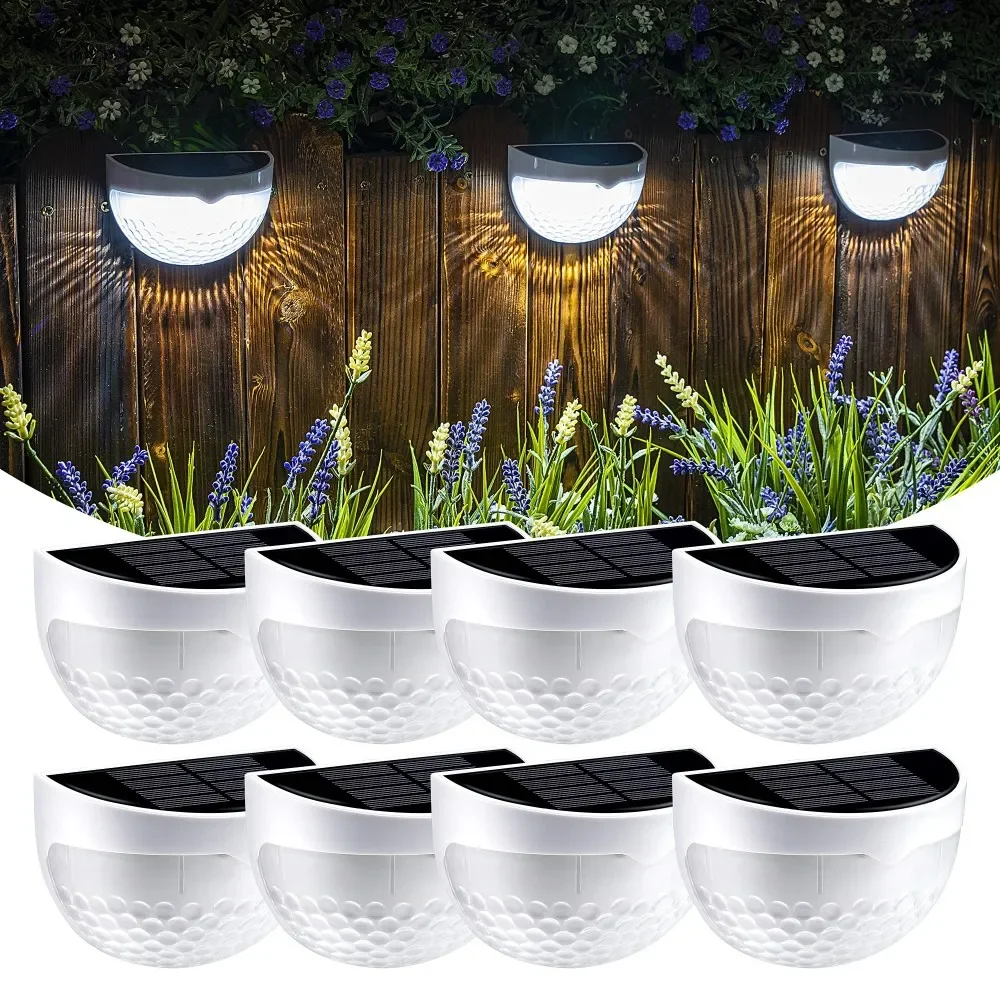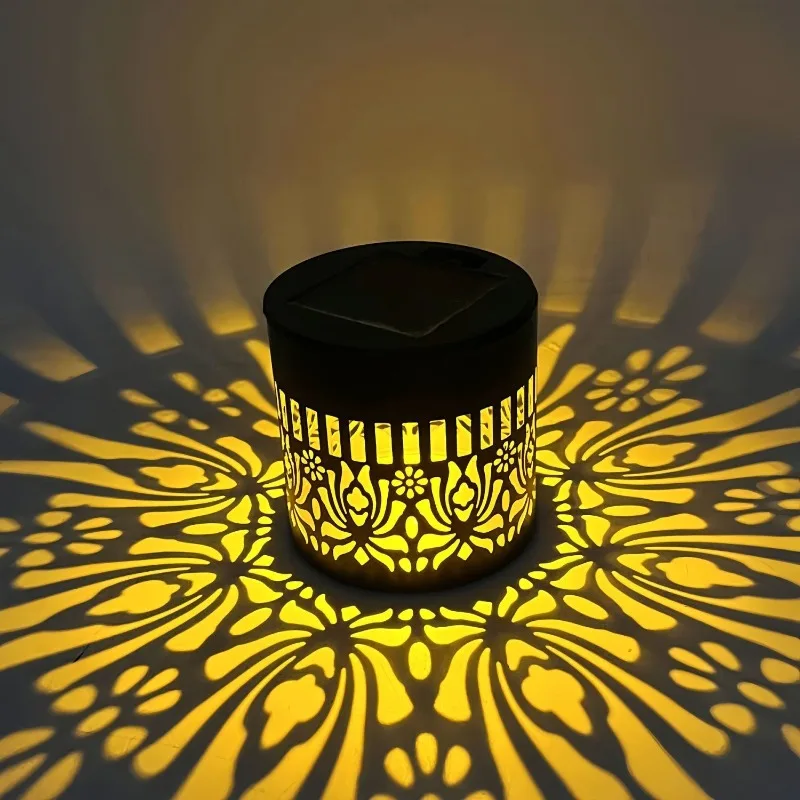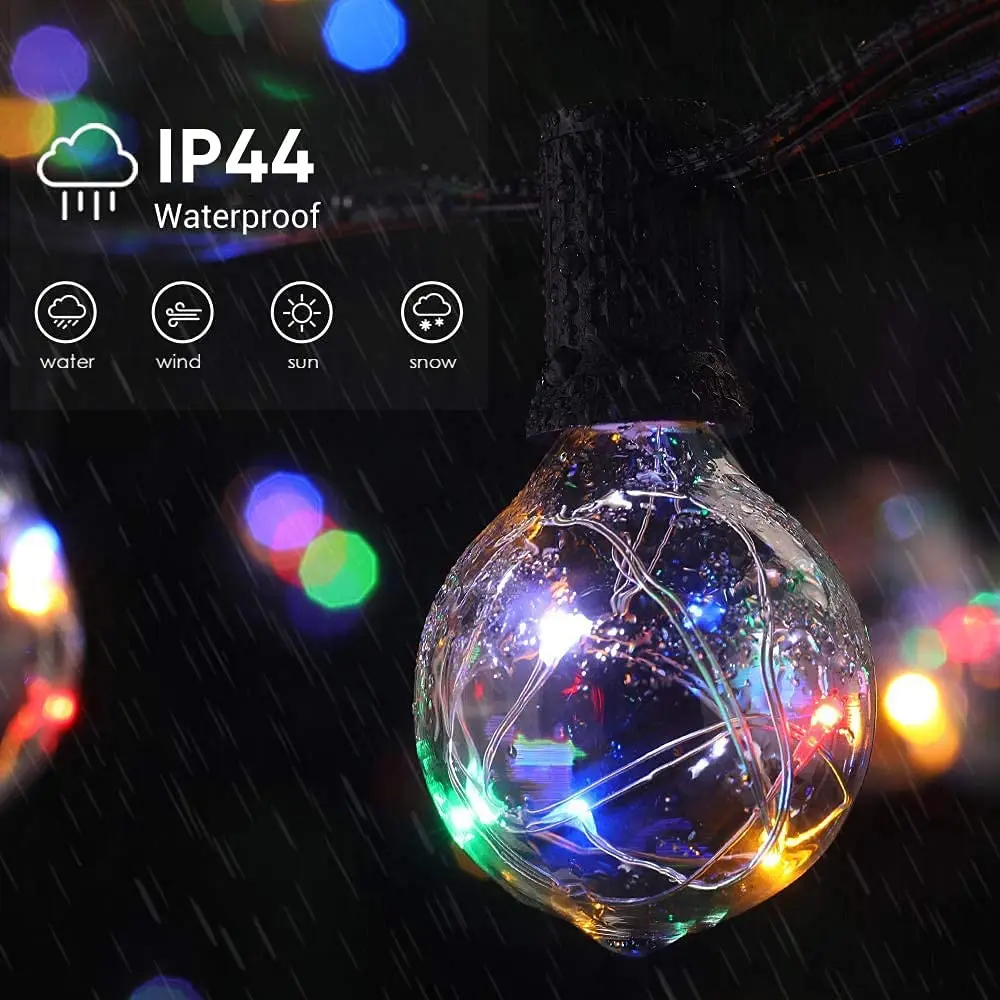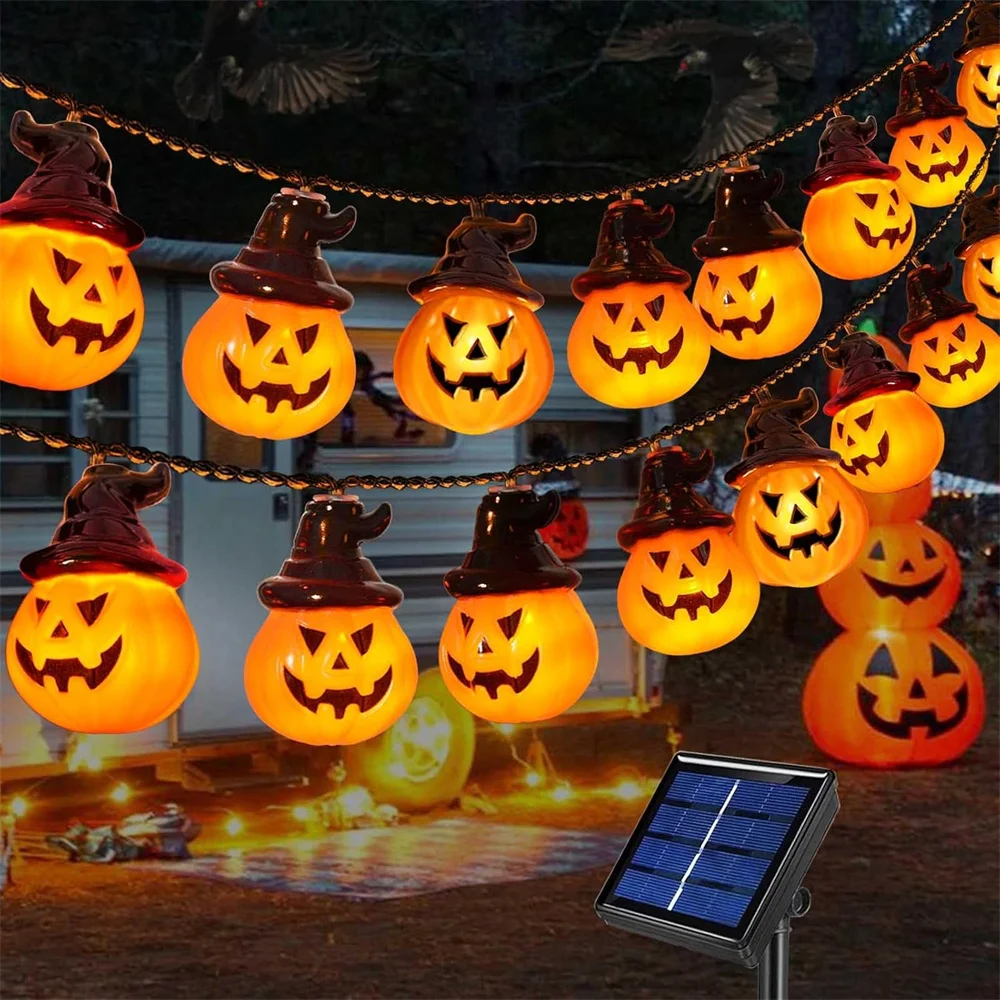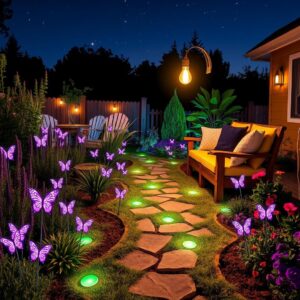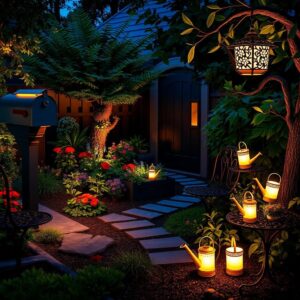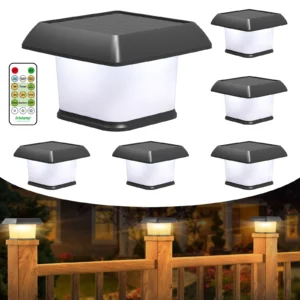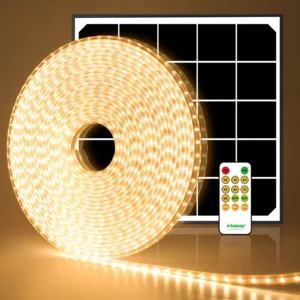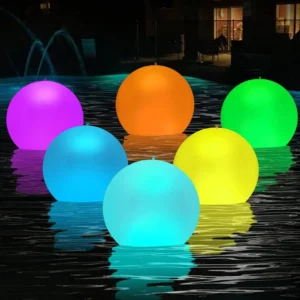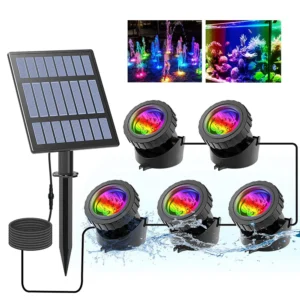Solar Watering Can Light | Solar Stake Light for Flower Pots
Introduction to Solar Lights
Imagine stepping outside as dusk settles, your garden gently blinking awake with a soft, sun-powered glow. That’s the quiet magic of solar lights—simple, elegant devices turning sunlight into warm illumination without any fuss. At their heart, solar lights are eco-friendly lighting solutions designed to harness the sun’s energy during the day and spill it back as light through the night. From lining a winding garden path to casting a cozy shimmer around a patio, these lights blend sustainability with style seamlessly.
Solar garden lights, perhaps the most familiar type, offer more than just ambiance. They invite you to spend longer evenings outside, enrich your outdoor spaces, and reduce dependence on traditional electricity—all without trailing wires or draining your wallet. But beyond their charming twinkle lies fascinating technology and smart design that work together to make them efficient and dependable.
Understanding how solar lights work isn’t just about geeky curiosity; it’s the key that unlocks better use and longer life from your solar lighting setup. When you know what’s happening inside the little box that glows in your yard, you can place it where it catches the best sunlight, maintain its batteries, and troubleshoot any dimming troubles with confidence. Think of it as learning your garden’s silent language—each solar light tells a story of sunlight captured, stored, and transformed into evening enchantment.
So, whether you’re a newcomer dreaming of a glowing outdoor escape or a seasoned gardener looking to get the most from your solar investment, understanding the basics of solar lights sets the stage for magic that’s as practical as it is beautiful. Let’s dive into how these nifty devices turn daylight into soft, sustainable light—because when you know the tech, your garden shines brighter.
6LED Solar Staircase Lights – Waterproof Outdoor Wall Lights
How Solar Lights Convert Sunlight to Electricity
Solar lights are deceptively simple in appearance, but behind their gentle glow lies a fascinating dance of clean energy transformation. At the heart of every solar light is the ability to capture sunlight and turn it into electricity—a process powered by photovoltaic cells, batteries, and energy-efficient LEDs.
First up: photovoltaic cells. These are the warriors that capture sunlight. Think of them as sleek energy harvesters nestled within the solar panel. When sunlight hits these cells, they create a flow of electrons through a phenomenon known as the photovoltaic effect. No moving parts, no fuss—just sunlight coaxed into electrical energy. This electrical pulse is the lifeline that powers the entire system.
But sunlight doesn’t shine endlessly. That’s where rechargeable batteries come into play. Once the photovoltaic cells have gathered energy, it’s stored in batteries—typically lithium-ion or other rechargeable types built for longevity and steady output. These batteries are the quiet night-shift workers, holding onto the captured sunlight’s power during the day and then gently releasing it to keep the garden lights glowing well after dusk. Their capacity shapes how long and how brightly your garden stays enchanted through the night.
Finally, the stored energy breathes life into LEDs—the bright, efficient light sources preferred for solar lighting. LEDs use far less power than traditional bulbs but still produce a warm, steady glow. When night arrives, the energy stored in the batteries flows to these LEDs, bringing your solar decor to life with shimmering warmth and soft illuminations. The magic of solar lights boils down to this elegant system: sunlight caught by photovoltaic cells, saved by batteries, and expressed through LEDs into subtle, sustainable brilliance.
Understanding this triad—the capture, storage, and illumination—empowers anyone to see solar lights not just as pretty fixtures but as smart, self-sufficient energy systems. And with that knowledge, you’re ready to optimize their performance and enjoy long-lasting, eco-friendly garden enchantment.
Halloween Swaying Skull Solar Firefly Light 6/12LED
Key Components of Solar Lights
Imagine a solar light not as a single item but a neat team working quietly together under the sun and stars. Each piece plays its part so your garden or walkway can glow warmly, powered simply by daylight. Let’s break down the guts of these little marvels—the heart and soul behind their effortless shine.
Solar Panels
These flat, shining surfaces are the frontline heroes. Their job? Capture sunlight and turn it into electricity. Most solar lights come with silicon-based panels—monocrystalline or polycrystalline being the usual suspects. Monocrystalline panels pack more punch in efficiency; think of them as the sprinters of solar power, squeezing more juice from sunbeams. Polycrystalline panels are a bit more budget-friendly but slightly less efficient. How well your solar light performs largely depends on the quality and size of its solar panel. And since the sun’s angle shifts throughout the day, panels face an important job: soaking up as much light as possible during daylight hours. A dusty or shaded panel is like a sponge with holes—its power soak goes down, dimming your garden’s nighttime glow.
Rechargeable Batteries
Solar panels can only work when the sun is out, but your garden needs light after dusk. Enter the rechargeable batteries: the night-shift champions storing daytime energy in chemical form. Lithium-ion is the go-to battery type nowadays, prized for long life and reliable storage. Others might use nickel-metal hydride (NiMH) batteries, which serve well but generally have shorter lifespans. The battery’s capacity directly impacts how long your light whispers its glow after sunset; a bigger battery means longer nights of twinkling brilliance. But none last forever—over time, battery performance dips, so replacing them is part of keeping your solar magic alive.
LEDs (Light Emitting Diodes)
Once the battery’s juice is ready, LEDs take center stage. These tiny bulbs are power ninjas—brilliant, durable, and super energy-efficient. They produce vivid light without guzzling battery power, allowing solar lights to stay bright well into the night. Plus, LEDs come in various colors and shapes, offering plenty of style to match your garden’s vibe.
Charge Controller
Think of the charge controller as the vigilant gatekeeper, ensuring the battery fills up safely and never gets overloaded. It monitors the current flowing into the battery, preventing too much juice from frying the cells during bright days. This smart component extends battery life and keeps your solar setup running smoothly, silently guarding your garden’s evening glow.
Light Sensor
Finally, the light sensor is the solar light’s switch in disguise. It senses ambient light levels, flipping the LEDs on as twilight deepens and turning them off at dawn or in bright settings. This automatic on/off wizardry means your lights work only when needed, saving energy and adding convenience without a flick of a manual switch.
Together, these components create a seamless dance of sunlight transformed into cozy illumination. From the sun-kissed panel to the patient battery and bright LEDs, your solar light quietly crafts a nightly spell—no wires, no fuss, just pure garden magic.
Halloween Skull Wind Chime with 6 Color Changing LED Lights
Debunking Common Myths About Solar Lights
When it comes to solar lights, whispers of doubt often cloud their true potential. Let’s cut through the noise and lay bare the facts, giving you straightforward clarity so you can trust your garden’s glow come rain or shine.
Myth: Solar Lights Don’t Work on Cloudy Days
Here’s the cold, hard truth: solar lights don’t shut down just because the sun hides behind a cloud. Their photovoltaic cells are up to the task, soaking in whatever sunlight filters through—even on overcast days. Sure, the energy harvested isn’t as abundant as on glorious, clear afternoons, but it’s far from useless. Many solar lights are designed to stretch that subdued power over the dark hours, gradually illuminating your space with a gentle, persistent shine rather than vanishing into darkness.
Think of it like a reservoir filling slower but still filling nonetheless. That soft, ambient glow on a misty evening? That’s solar lights doing their job, quietly reliable in less-than-perfect weather. Of course, prolonged cloudy stretches might dim their brilliance or shorten the runtime, but they won’t leave you in the dark.
Myth: Solar Lights Are Unreliable in All Low Sunlight Conditions
Don’t believe the fuss that solar lights falter everywhere sunlight is scarce. Low sunlight zones, like shaded gardens or areas surrounded by tall structures, do pose a challenge—but they don’t spell doom. Modern solar lights come equipped with more efficient panels and smarter energy management to navigate these tricky spots.
Real-world performance data show that a thoughtfully placed solar light can still dazzle even where sunbeams are shy. It’s all about savvy positioning: a sunny patch, a slanted panel capturing those filtered rays, and batteries ready to store every precious joule. Plus, these lights use LEDs—tiny powerhouses that stretch their stored energy far into the night without guzzling power.
The takeaway? Solar lights might not blast out spotlight-level brightness in low light, but they offer dependable, enchanting illumination that quietly adapts to your garden’s unique rhythm.
In the end, these myths often stem from outdated tech or mismatched expectations. Today’s solar lights blend smarter design with steady reliability—perfect companions for those who want eco-friendly style without fuss. So go ahead, trust the sun’s subtle promise and let your solar-lit garden stories shine even when clouds gather.
G40 Solar String Lights – Outdoor Patio LED Lights
Optimizing Solar Light Performance
Getting the most out of your solar lights isn’t just about buying a flashy model—it’s about smart setup and simple upkeep. Think of it like tuning a finely crafted tool: a little care and attention can fuel hours of warm, consistent glow long after the sun sets.
Maximizing Energy Capture
The heartbeat of any solar light is its solar panel, which drinks in sunlight all day and turns it into electricity to feed the battery by night. To truly crank up this quiet power source, position your solar panels where they can soak up the most sun, free from the sneaky sneak of shadows. A panel angled between 30 and 45 degrees is a solid rule of thumb, adapting slightly depending on your latitude to catch those sweet rays head-on. Obstructions like tree leaves, fences, or even garden furniture can sabotage your solar feast—trim or relocate if you spot shade flirting with your panels during the prime sun hours. High-efficiency solar panels might come with a heftier price tag, but they chew through sunlight like champs and pump up your light’s mojo in dim or cloudy conditions.
Enhancing Battery Life and Efficiency
Behind that glowing LED lies a rechargeable battery working overtime to hold onto the day’s captured energy. Keeping this little powerhouse in good shape means a longer shine. Over time, batteries naturally lose their zest, so swapping them out every couple of years keeps your solar lights bright and reliable. Avoid cheap knock-offs; quality batteries like lithium-ion or nickel-metal hydride give you steady, long-lasting performance. Also, if you live somewhere shrouded in frost or rain often, bring your solar lights indoors occasionally to dry off and recharge batteries fully. Simple steps like these keep your lights running smoothly through many seasons.
Using Light Sensors Effectively
Most solar lights come with an automatic light sensor that flips them on at dusk and off at dawn, conserving precious battery power. Yet, these sensors sometimes get confused—think streetlights or porch lights spilling stray beams that fool sensors into turning off too soon. When installing, try to keep your solar lights away from artificial lights that might trick the sensor. If your lights have adjustable sensors or timers, take advantage of those settings to fine-tune when your lights glow. The goal? A pleasant, effortless evening ambiance without battery burnout or missed moments of magic.
By giving your solar lights thoughtful placement, mindful maintenance, and sensor savvy, you unlock their full potential. It’s a simple dance with the sun—one that pays off with cozy nights basked in eco-friendly, solar-powered glow.
LED Solar Outdoor Lights for Garden Decoration
Solar Light Use in Challenging Conditions
Solar lights are champs when it comes to adaptability, but certain conditions—like low sunlight areas and winter months—pose tricky puzzles for their glow. If you’ve ever wondered how to keep your solar garden lights shining bright through the gloom, here’s the lowdown with straightforward solutions.
Low Sunlight Areas
Not every spot in your yard basks in glorious sunlight all day. Trees, buildings, or even seasonal shading can leave some corners understandably dim. With solar lights, less sun means less juice, but they’re far from powerless.
First step: choose solar panels geared for efficiency. Look for panels built with high-grade photovoltaic cells—they’re better at squeezing energy out of weaker light. Then, placement becomes key. Angle the panels so they catch the sun’s rays like a solar sponge—typically tilted toward the sun’s path rather than flat. Avoid shadows as much as possible; even a small patch of shade on your panel can seriously clip the energy harvest. In tight spots, elevate your solar lights or move them closer to open skies.
Another smart move is spacing your lights sensibly. Crowding too many panels in one shadowy nook doesn’t help; scatter them where each can soak in maximum daylight. Sometimes, supplementing with solar lights designed to operate well in partial shade—those with bigger batteries or more sensitive cells—can be a game-changer.
Winter Solar Light Performance
Winter throws in a few more hurdles—shorter days, gray skies, and snow’s cover can all stoop the power flow. The chilly air also slows battery chemistry, reducing how much energy they hold. But don’t shelve your solar magic just yet.
Choose models specifically made for winter resilience. Some come with batteries designed to maintain capacity even in cold temps and solar panels treated to shed snow swiftly. Regular maintenance helps too: clear off snow and debris from panels and lights to keep that precious light absorption uninterrupted.
Since daylight is limited, expect shorter burn times at night in winter, but a well-maintained system still creates cozy ambient lighting. To boost this, angle solar panels for the lower winter sun and consider bringing lights indoors on extreme weather days to recharge near windows.
In all, the secret to thriving solar lights in tough spots is mixing savvy gear choices with smart placement and a little seasonal TLC. So whether shaded by maples or frosted over in snow, your garden’s solar glow can keep flickering faithfully, turning your outdoor space into a subtle, sun-powered sanctuary no matter the weather.
Solar G40 Outdoor Fairy Lights – Waterproof Connectable Decor
Recent Innovations in Solar Lighting Technology
Solar lighting has come a long way from simple garden stakes powered by modest panels. Today, the technology is evolving with smart features and clever designs that push efficiency and convenience to new heights. Let’s cut through the fluff and look at three game-changing innovations that are making solar lights smarter, stronger, and more reliable than ever before.
First up: self-cleaning solar panels. Anyone who’s left outdoor lights to gather dust or grime knows how quickly efficiency can drop. These new panels are coated with special materials that repel dirt and water. That means rain or morning dew naturally washes away the build-up, keeping the surface clear and letting sunlight do its work without hassle. It’s a simple but brilliant upgrade—less maintenance for you and steady, dependable energy capture for your lights.
Next, the rise of IoT smart sensors is where solar lighting steps into the future. These aren’t your standard on/off setups. Instead, they connect wirelessly to apps, letting you monitor battery levels, usage patterns, and even control lighting schedules from your phone. Imagine dimming garden lights remotely or setting them to react to real-time weather conditions. This level of control not only boosts convenience but also stretches battery life by tailoring operation precisely to your needs. Smart solar lights are perfect for anyone wanting both ease and energy-savvy solutions.
Lastly, advances in photovoltaic materials are quietly revolutionizing how solar panels perform. Traditional silicon panels are getting competition from emerging materials like perovskites and organic polymers. These new substances absorb sunlight more efficiently and are often more flexible or durable. The result? Lighter, longer-lasting solar panels that generate more juice from the same amount of daylight—even under less-than-ideal conditions. This means your solar lights can shine brighter and longer, even on dim days or shaded spots, unlocking new possibilities for placement and design.
Together, these innovations hint at a future where solar lights are not just eco-friendly options but powerful, adaptive features of your outdoor space. Less fuss, more brilliance—your garden’s glow just keeps getting smarter and more enchanting with every sunset.
Solar Pumpkin Lights for Outdoor Halloween Decorations
Conclusion
Solar lights aren’t just whimsical additions to your garden; they’re clever little systems that turn sunlight into glowing warmth after dusk. At their core, these lights rely on photovoltaic cells to capture the sun’s rays and convert them into electric energy. That energy is tucked safely away in rechargeable batteries, waiting for nightfall to power efficient LEDs that dance gently across your outdoor spaces. Knowing this cycle—the way solar panels soak up light, how batteries hold charge, and the role sensors play in switching the glow on and off—gives you the upper hand in making sure your solar lights shine their brightest.
There’s a good deal of skepticism around solar lights, often wrapped in myths that they’re useless on cloudy days or unreliable when the sun’s shy. But the truth is more straightforward and encouraging. Even under gray skies, solar lights still gather energy—just a bit more slowly—and modern technology has refined how they perform in various conditions. Understanding this busts those stubborn doubts, helping you trust that your solar garden can sparkle night after night, regardless of a little cloud cover or shorter winter days.
Armed with this knowledge, you’re ready to optimize how your solar lights perform. Positioning your panels to catch generous sunlight, keeping batteries healthy, and fine-tuning sensor settings aren’t just maintenance chores—they’re ways to nurture your garden’s light magic. Plus, exciting innovations like self-cleaning panels and smart sensors promise even easier, smarter lighting in the near future.
So, why not embrace the charm of solar lighting with confidence? Whether you’re sprinkling stake lights along pathways or hanging lanterns near your favorite blooms, solar lights offer an eco-friendly, practical, and enchanting glow that transforms any garden into a serene haven after sundown. Light it right, keep it simple, and let your outdoor space shine naturally with the steady power of the sun.


